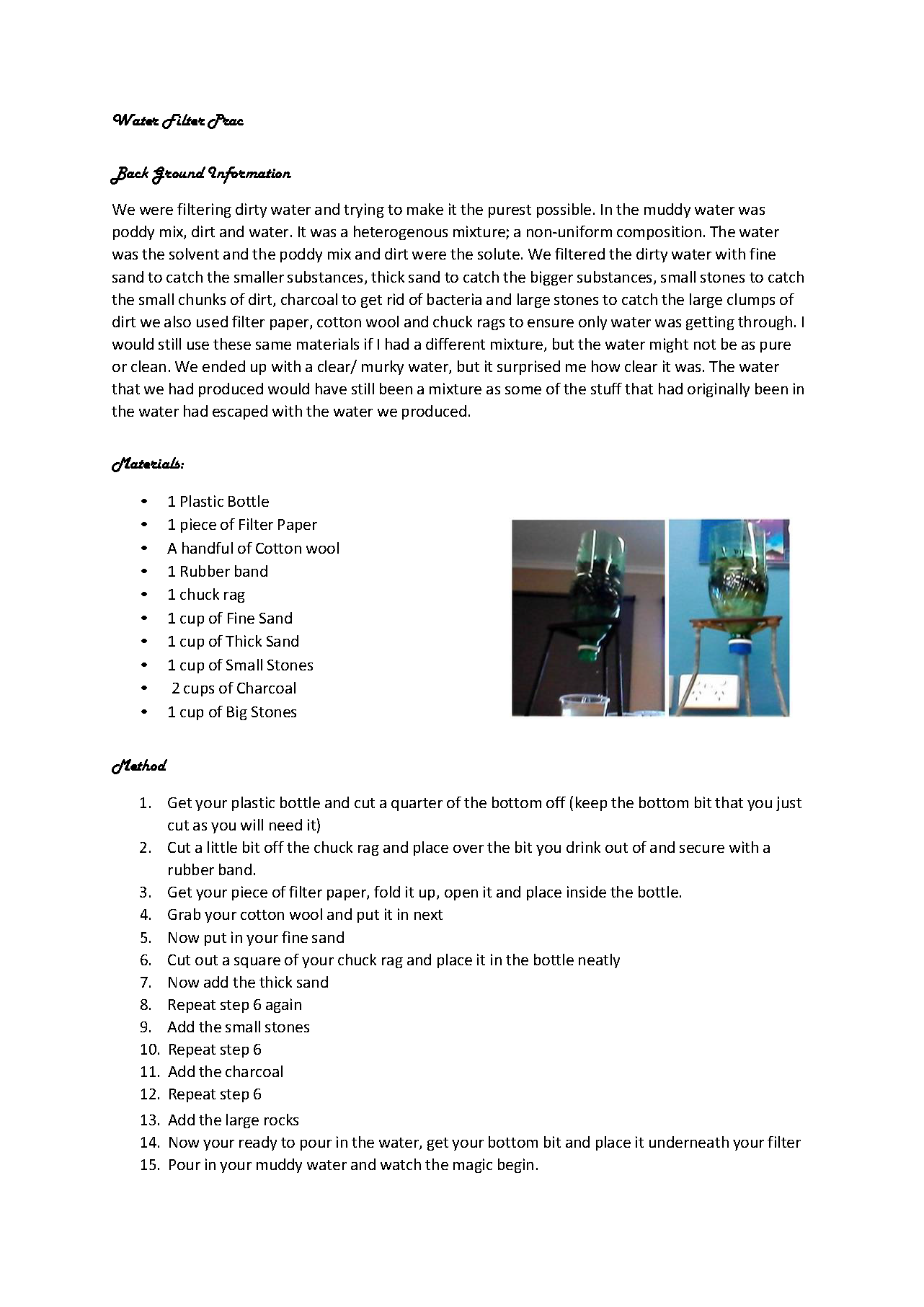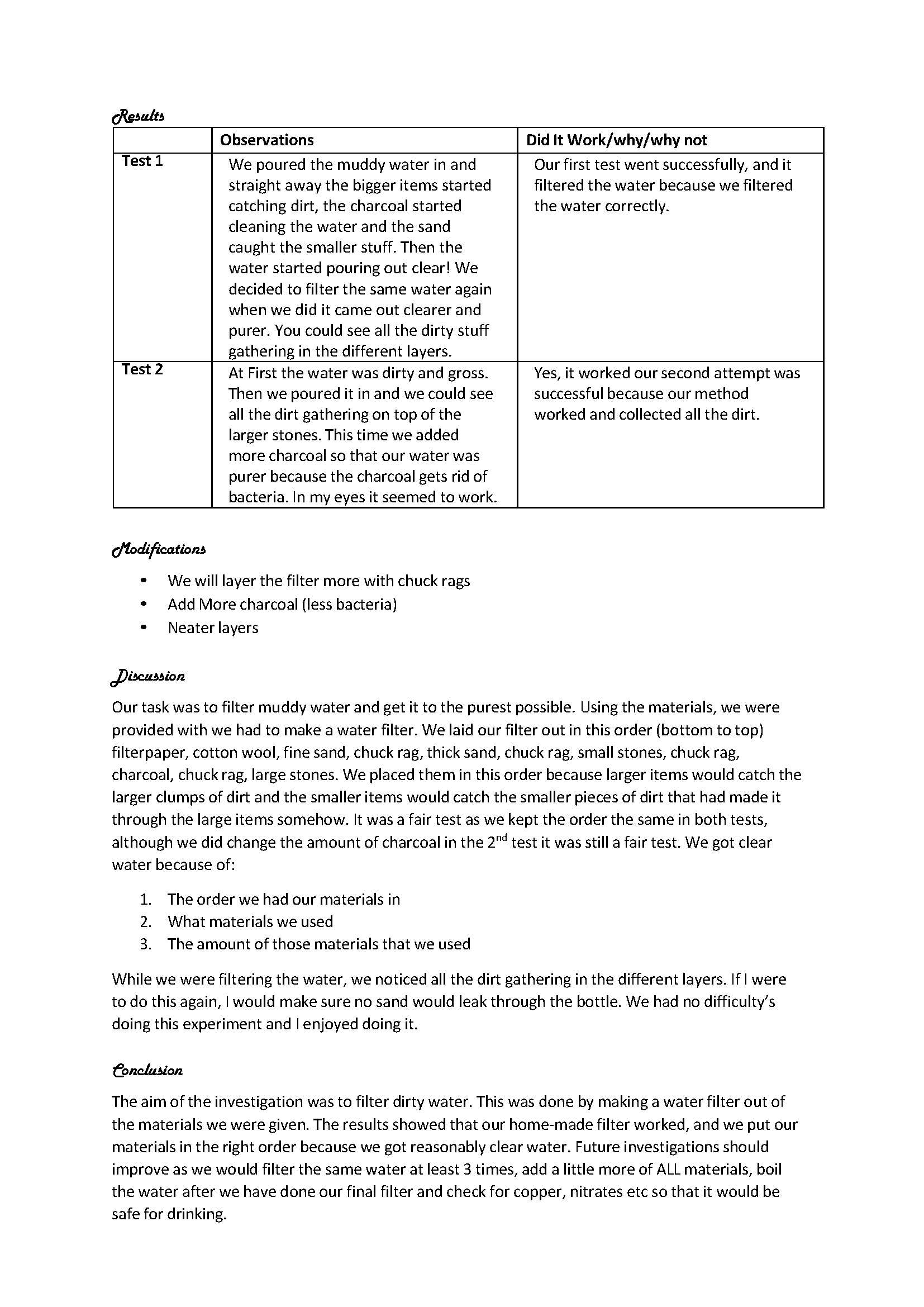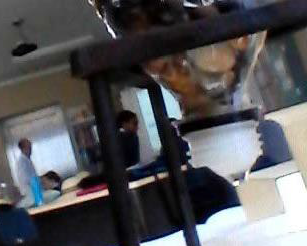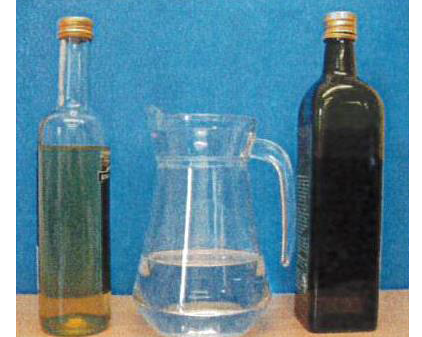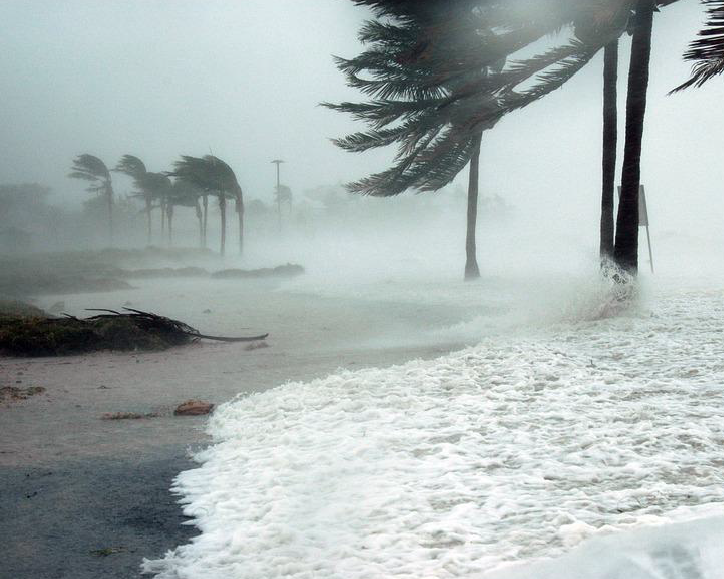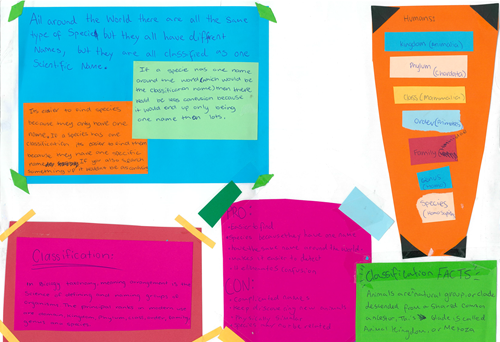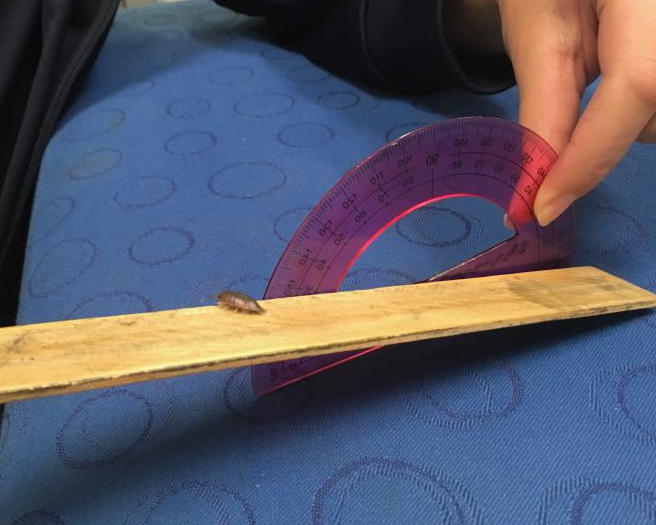Water purification
Summary of task
In a teaching and learning unit on pure substances and mixtures, students investigated different types of mixtures and explored scientific terminology used to describe their components, states of matter, reversible and irreversible changes, aspects of particle theory and properties of water.
This task was a component of a cross-curricular STEAM project where students were asked to re-design a garden within the school. Their brief was that the garden had to be a place of relaxation and reflection and it should improve the biodiversity within the area. Students were asked to design and create a water purification method for this water feature using one or more of the separation techniques investigated in class. Students were asked to design and create a water purification method for this water feature using one or more of the separation techniques investigated in class. They were provided with all materials to create a filter and a sample of dirty water. Students were asked to create a report to describe their design process and their observations regarding the effectiveness of the filtration process.
Over the course of three weeks, students worked in groups of three to research and design the filtration device and to perform the experiment; they were required to create individual reports. Students were provided with scaffolding during the design and modification phases to ensure they understood the concepts of a fair test.
